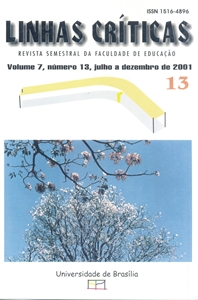Maria Montessori e seu método
DOI:
https://doi.org/10.26512/lc.v7i13.2914Keywords:
Educação do Homem Consciente Linha;, Materiais pedagógicos;, MontessoriAbstract
Neste artigo, a autora desenvolve reflexões sobre o Método Montessori, que há um século, por volta de 1907, já propunha uma educação libertadora para a criança, valorizando-a como um ser pensante e capaz de responder aos apelos do real, visando a formação de uma personalidade autônoma e do Homem Consciente. Esse método, além de adotar uma perpectiva filosófica e metodológica para atender a criança, construindo materiais pedagógicos específicos e estratégias pcdagógicas. introduz a "Linha", que constitui a base da educação montessoriana. Maria Montessori revolucionou estruturas convencionais de assimilação do mundo adulto pela criança, sendo que muitos procedimentos adotados em seu método, os quais poderiam parecer anacrônicos na época atual, ainda continuam a ensejar muitos adeptos, representando um avanço no campo da pedagogia infantil.
Downloads
Downloads
Published
How to Cite
Issue
Section
License
Copyright (c) 2016 Linhas Críticas

This work is licensed under a Creative Commons Attribution 4.0 International License.
Authors who publish in this journal agree to the following terms:
-Authors maintains the copyright and grants the journal the right of first publication, the work being simultaneously licensed under the Creative Commons Attribution License which allows the sharing of the work with recognition of the authorship of the work and initial publication in this journal.
- Authors are authorized to enter into additional contracts separately, for non-exclusive distribution of the version of the work published in this journal (eg publish in institutional repository or as a book chapter), with acknowledgment of authorship and initial publication in this journal.
-Authorers are allowed and encouraged to publish and distribute their work online (eg in institutional repositories or on their personal page) at any point before or during the editorial process, as this can generate productive changes as well as increase the impact and the citation of published work (See The Effect of Free Access).



